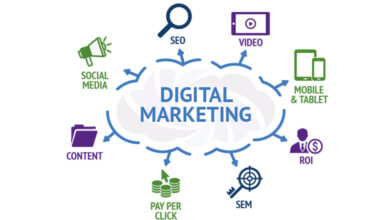
Why 3D Rendering is Crucial for Visualizing Future Projects?
3D rendering is a commonly-used technology today. You would have probably seen it on a billboard or even in a random social media post. It’s impossible to overstate the value of 3D rendering in the architectural industry. Seeing a concept in detail before it is built is incredible. Architects find it helpful since it allows them to anticipate and prepare for problems.
Moreover, 3D rendering is a beautiful way to represent what the project will eventually look like. It is a revolutionary way to bring ideas and the designer’s vision to life without spending a dollar on construction. The final rendering vividly represents the exterior design, thanks to high-definition textures, spectacular lighting effects, and other features. This article will delve deep into 3D rendering, its impact on the industry, and future trends.
What is 3D Rendering?
3D rendering is the method used to convert data from a three-dimensional model into a two-dimensional image that can be displayed on a plane surface. It essentially takes a three-dimensional scene, models it, and represents it on a two-dimensional surface. The degree of photorealism depends on the techniques and tools used to carry out the process. To produce a 3D rendering, various techniques and tools are employed. Consequently, it is crucial to recognize that 3D rendering is a process and not a single step to create the final product.
In the architectural domain, 3D rendering services allow an architect to test ideas, try out different materials, and gain some perspective on their designs before starting construction. With the advent of artificial intelligence, this field is seeing enormous leaps.
Benefits of 3D Rendering for Visualizing Future Projects
3D rendering has resulted in a dramatic shift in the way architecture professionals look at their roles. It has played a massive role in simplifying the architectural design process by streamlining the entire experience. It frees professionals to take up bigger, bolder projects. With technological advancements like cloud computing and deep learning, the industry is set to see strong growth over the next decade. By eliminating the possibility of human errors and allowing simulation and subsequent revision of designs, 3D rendering has revolutionized the architecture industry. Here are some of the benefits associated with 3D rendering:
- Branding and Marketing: It undoubtedly makes marketing a breeze when you can deliver an accurate representation of the final project without having to rely on creating physical models first. In contrast to traditional on-site photography, which requires the services of a photographer, designer, decorator, and lighting specialist, 3D rendering only requires one person: the 3D artist. Allowing your investors or buyers to visualize the final result can eliminate many doubts in their heads and display your commitment to finishing the project. You are free to hire a 3D team in-house or rely on a reliable partner for your architectural rendering services.
- Analysis before construction: With the help of 3D rendering, architects can develop multi-perspective designs and immersive walkthrough experiences for their customers and investors. As a result, decision-makers can make educated choices by picturizing future building processes rather than relying on their gut feeling or personal beliefs. It allows you to experiment with material options and different textures without wasting valuable time and money.
- Redesigning and Remodelling: Identifying errors in judgment or poor design choices is easier since fixing the mistakes does not result in project delays. Such delays can prove detrimental to the entire process, given the cost of having a construction crew on-site waiting for redesign approvals.
- Improved cost efficiency: With rapid advancements in the field, the cost of 3D rendering has reduced drastically over the years. With a 3D render of the final design available to every project stakeholder, it ensures minimal errors, thereby eliminating costs that arise due to wrong assessments caused by lack of communication, which also boosts the overall operational efficiency of the project.
Summing Up
Outsourcing allows you to get hold of high-quality visual artists. Achieving a smooth workflow can be challenging, given the kind of inconsistent results lone-wolf freelancers are notoriously famous for. But contracting an offshore design center or animation studio can make the entire process a breeze, from start to finish. The process is flexible, where you decide the scope of work and deliverables. Such firms also offer NDA(s), regular reporting, and strict QC. This allows you to maintain cost efficiency as well.








